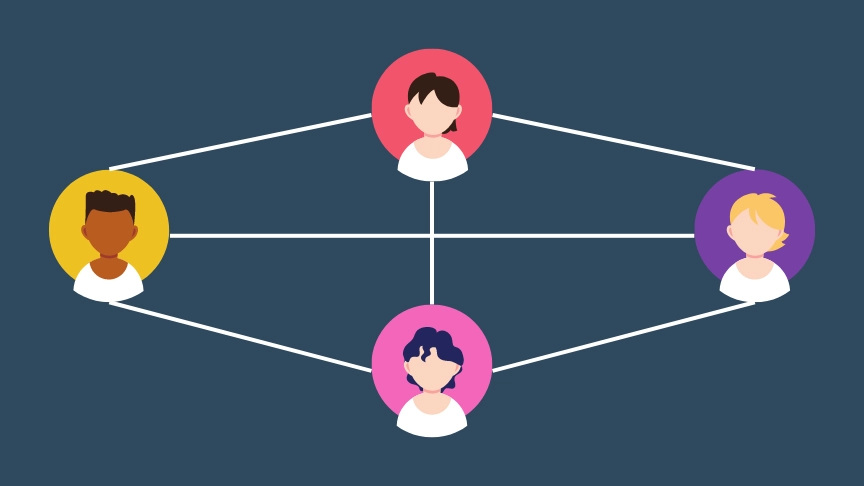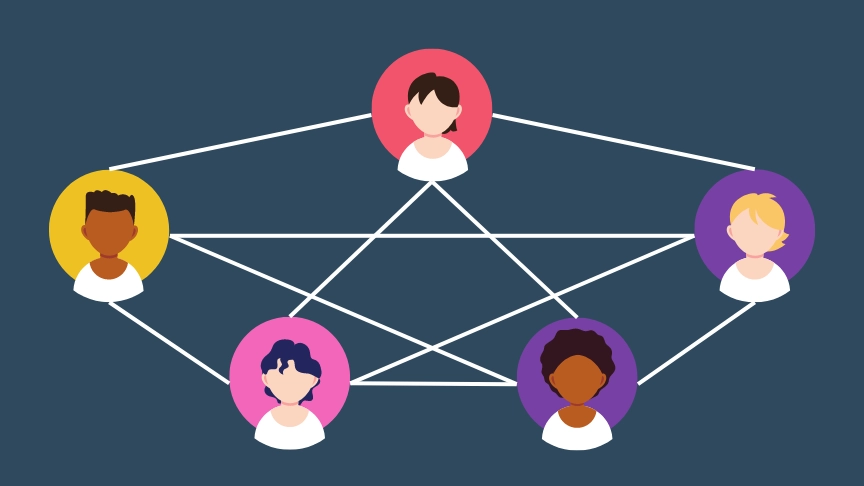Scrum Team Roles and Responsibilities: Scrum Master, Product Owner, and the Development team.
Scrum Team Roles and Responsibilities: Scrum Master, Product Owner, and the Development team.
Introduction
As described by the Scrum Guide, a Scrum team consists of three roles: a Scrum Master, a Product Owner, and the Development team. While we can have a broad skillset in our team, the scrum framework only needs these three scrum roles to create a self-organizing team.
This blog post will review the scrum roles and responsibilities and what makes a good Scrum team.
What are the attributes of Scrum Teams?
The scrum framework describes our team as having the following attributes:
- Cross-functional
- Self-organizing
- Self-managing
Each team member holds each other accountable for their responsibilities. They select their own work during the sprint. Create sprint goals and manage their own work. They work together towards a valuable product increment.
What does cross-functional mean?
Cross-functionality in the context of a Scrum team means that the team has all the skills necessary to deliver a valuable increment of the product. The team does not only contain software developers but also database administrators, UI/UX designers, etc.
What does self-organization mean?
Self-organization means that the team can align around a goal and distribute the work between them to deliver a valuable product increment. The team does this on a daily basis during the Daily Scrum.
If there is an obstacle, the Scrum Master coaches the team to solve this obstacle. If the team needs expertise from a domain expert that is not available, they will try to solve the challenge by themselves.
What does self-managing mean?
Self-managing in the context of Scrum means that the team manages its own work. They create their own plan and make changes to their own processes to improve the quality and value of the product increment.
What are the Scrum team's responsibilities?
The scrum team is responsible for all product-related work. Stakeholder collaboration, verification, maintenance, operation, experimentation, research and development, and anything else that might be required are part of the team's responsibilities.
They have one objective at a time, and that's the sprint goal that aligns with the bigger picture of the product goal.
Building successful scrum teams
When you first start with Scrum, you'll find that your team members do not have a T-Shaped skillset. This is not a bad thing to start with. It gives you and the team a lot of room to grow.
When you start your first sprint, the lacking skills of your team will emerge. The Scrum Team should inspect their shortcomings and make a plan to fill in the knowledge gaps. This will ensure your team members will build their T-Shaped skillset.
When the team becomes more cross-functional, it'll deliver more value during its sprints.
What are T-Shaped skills?
Having T-Shaped skills means that a person has deep skills in one particular area, for example, back-end development. But this person also has the skills to take on other tasks in the sprint, like front-end development, testing, and writing documentation.
Now that we know we need team members with T-Shaped skills, it is unrealistic to think we can build a team with the required amount of skills from the start. It is, therefore, important that we create a culture of continuous learning and that our skills evolve with what the product needs.
What is the ideal Scrum Team Size?
Ten or fewer people.
With every person added to the team, communication between team members becomes exponentially more difficult.
In this first image, we have a team of four. You can see that communication is not that complex, and we have six communication lines.

Now in our second image, we've added one team member. While we've only added one team member. The amount of communication lines increased to ten.

This is why we don't want to make a big team and keep the size to ten or fewer people.
The Scrum Master: Teacher of the Scrum values, principles, and practices.
The Scrum master is the protector of the Scrum framework. The scrum master acts as a servant leader and coach to the scrum team. Teaching the team the scrum practices.
The Scrum Master is responsible for the continuous improvement within the Scrum team. This does not mean that the Scrum Master needs to increase the velocity of the team. But, that the team continuously inspects its own processes and work to improve the bottlenecks and quality. An improved velocity can be a by-product of continuous improvement practices.
He coaches how the Scrum Team works and organizes themselves around the sprint goal.
Scrum Master roles and responsibilities
The Scrum master fulfills the following roles in the scrum team:
- Coach
- Servant leader
- Process authority
- Interference shield
- Change Agent
- Impediment remover
The Scrum Master coaches the team members and makes sure the Scrum Ceremonies take place. The Scrum Master serves the organization in adopting the Scrum Framework and coaches stakeholders and team members on interacting with each other.
Is a Scrum Master a project manager?
No, the Scrum Master is not the project manager by default. However, the Project Manager can take on the role of Scrum Master.
The Product Owner: Setting a clear direction
The product owner is the visionary for the product the team is building. The Product owner is responsible for the backlog of the team. This person makes sure the team can deliver the highest amount of value in their sprint and is the sole owner of the product backlog.
While others can add product backlog items to the product backlog, the product owner decides the position of the product backlog item in the product backlog. No CEO, manager, stakeholder, or other scrum team members can alter the order of the product backlog without consulting the Product Owner.
Product Owner Roles and Responsibilities
The product owner has the following roles and responsibilities in the scrum team:
- Managing economics.
- Participate in planning.
- Groom and prioritize the product backlog.
- Define acceptance criteria and verify that they are met.
- Collaborate with development team members.
- Collaborate with internal and external stakeholders.
As the product owner does not need to do all these tasks by themselves and can delegate some of the work to the Scrum Team, it is the Product Owner that is held accountable for these tasks.
The development team: Redefining “developer”
The development team is a term used for all the team members that are not scrum masters or product owners. When creating a product, you need not only developers but also analysts, testers, UI designers, administrators, ...
Each team member should have or try to develop a T-Shaped skillset. This way, the team becomes self-organizing and self-managing and reduces the risk of not having the skills when other team members get sick or leave the company.
Development team characteristics and skillsets
- Self-organization
- Cross-functional and diverse, and sufficient
- T-Shaped skills
- Musketeer attitude
- High-bandwidth communications
- Transparent communication
- Right-sized
- Focused and committed
- Works at a sustainable pace
- Long-lived
Development team roles and responsibilities
- Creating a plan for the sprint
- Instilling quality
- Adapting their plan each day towards their Sprint Goal
- Holding each other accountable as professionals
The development team is responsible for delivering a product increment during their sprint. This does not mean they must release at the end of their Sprint Review. They can release multiple times during the sprint when a product backlog item adheres to the definition of done.
They're also responsible for creating a daily plan for their work and inspecting if what they plan to do is valuable to the sprint goal.
The team also estimates oncoming product backlog items so that the product owner can make a projection of the product backlog based on the velocity. It is important that the people doing the work, estimate the work.
Conclusion
To build a successful Scrum team, it's important to understand the roles and responsibilities of the Scrum Master, Product Owner, and Development Team.
A Scrum team should be cross-functional, self-organizing, and self-managing. They should have all the necessary skills to deliver a valuable increment of the product.
The Scrum Master is the preacher of the Scrum Framework and acts like a coach to the team and organization, while the Product Owner sets a clear direction for the product while making sure the Scrum Team delivers the highest amount of value possible.
By understanding and following the Scrum roles, teams can succeed and deliver high-quality products.

